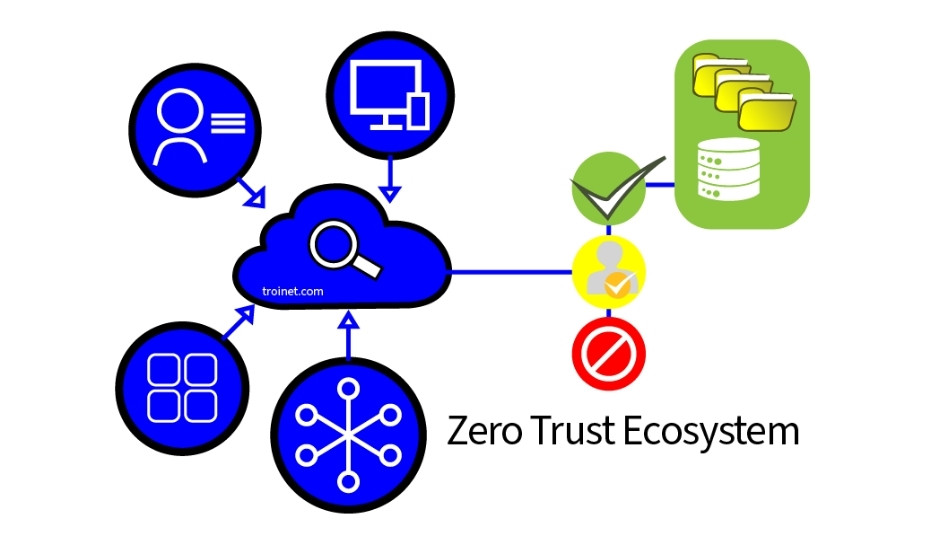The “Zero Trust” environment is rapidly becoming the preferred cybersecurity setup of small and medium businesses. This demand is expected to steadily increase in the coming years.
Zero Trust means that only pre-approved applications and users can access your data. It explicitly verifies the security status of users, endpoint devices, networks, and other resources.
The administrator has the capability to allow or disallow any program before it can be installed on any device.
In the same way, the administrator can choose what employees, locations, network types, and devices can access certain data at any given time.
Here’s a real-world parallel: Imagine you own a bank and you want to protect it from robbers. You installed security cameras, alarms, and security guards. At best, you still need to depend on human beings for determining bad elements – which means there is still room for error!
How can a security guard or CCTV controller tell if someone comes to rob? Reliance on human discretion has its pros, but having a preapproval mechanism gives you better peace of mind.
In a Zero Trust environment, ONLY the people you identified will be allowed to access your resources and money vault. This means you already made the identification and assessment prior to approach.
In a computer network, this means that only pre-identified users, end-point accessing devices, certain locations, network setups, and on-premise apps like Microsoft Office and Quickbooks are allowed, and not those without pre-approval.
Got questions about cybersecurity or other IT-related issues? Book a quick call here.


